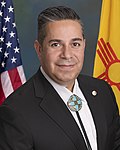Contents
- Incumbents
- Federal government
- Governors
- Lieutenant governors
- Events
- January
- February
- March
- April
- May
- June
- July
- August
- September
- October
- November
- December
- Undated
- Ongoing
- Births
- January 2
- February 2
- March 2
- April 2
- May 2
- June 2
- July 2
- August 2
- September 2
- October 2
- November 2
- December 2
- Full date unknown
- Deaths
- See also
- References
- External links
This article needs additional citations for verification .(July 2014) |
| |||||
| Decades: | |||||
|---|---|---|---|---|---|
| See also: | |||||
Events from the year 1972 in the United States.













































































































